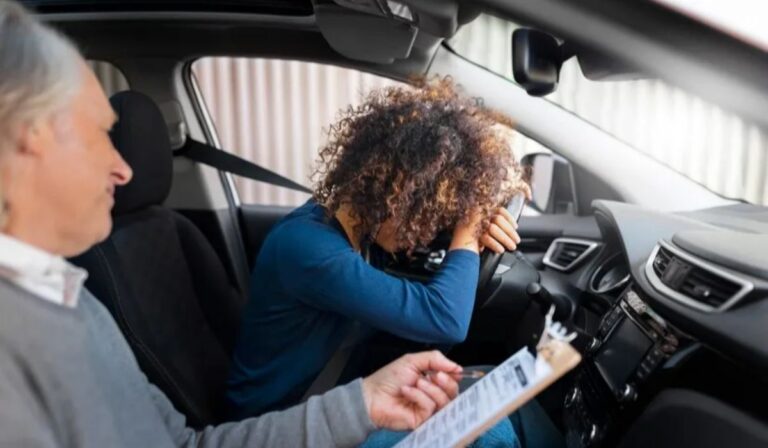Navigating Safe Roads: Common Car Accidents and How to Avoid Them
Introduction to Car Accidents
Car accidents are an unfortunate part of modern transportation, affecting millions annually across the globe. Being aware of the most common types of car accidents can vastly improve your safety on the road. From small fender-benders to serious multi-car collisions, these instances cover a wide spectrum. While it’s impossible to predict every potential danger, being informed about frequent accident scenarios can prepare drivers to respond effectively when confronted with challenging situations.
Understanding these common accident types equips drivers with the insight needed to anticipate risks and adopt safe driving behaviors. Proactively addressing potential hazards through education and practice significantly reduces the risk of accidents, safeguarding not just individual drivers but everyone sharing the road.
Rear-End Collisions: Causes and Prevention
One of the most common accident types is a rear-end collision, which usually happens in places with a lot of traffic or when cars have to stop quickly. These are often the result of drivers following too closely, misjudging the distance needed to stop safely, or becoming distracted. Technology, like smartphones, contributes significantly to driver distraction, which is responsible for many rear-end accidents.
To minimize these incidents, it’s crucial to practice maintaining an adequate buffer between your vehicle and the one in front of you. The National Highway Traffic Safety Administration suggests using the “three-second rule” as a guideline for safe following distances. Additionally, staying attentive to road conditions and traffic patterns while limiting distractions can greatly enhance a driver’s ability to respond quickly to sudden changes.
Intersection Accidents: Navigating Safely
Intersections are bustling junctures where multiple routes converge, making them notorious for accidents due to the complexity of navigation required. Drivers must make quick, informed decisions, often dealing with pedestrians, cyclists, and other vehicles simultaneously. Accidents at intersections often result from a failure to yield the right of way, excessive speeding, and disobeying traffic signals.
To navigate these areas safely, always slow down and approach with caution. Defensive driving principles are vital; ensuring your vehicle doesn’t enter an intersection until all potential hazards are clear is key. The AAA Foundation for Traffic Safety underscores the importance of scanning all directions and anticipating the actions of others. This proactive approach reduces the likelihood of collisions and facilitates smoother, safer navigation through intersected paths.
Parked Car Mishaps: Vigilance and Safety Measures
Parking-car mishaps can occur without warning, often in congested urban areas or packed parking lots where space is limited. Drivers may misjudge distances when maneuvering into or out of tight spots, or they may become distracted by external factors such as their passengers or surroundings.
Enhancing vigilance is a primary strategy against such accidents. Approaching parking spots slowly, using mirrors extensively, and ensuring that all vehicle systems, such as backup cameras, are in working order can improve visibility and awareness. When possible, reverse parking can provide better control and easier exits, diminishing the risk of collisions as you leave.
Side-Impact Collisions: Defensive Driving Techniques
Side-impact collisions, or T-bone crashes, are particularly hazardous because the sides of vehicles offer less structural protection than the front or rear. These accidents frequently occur when a driver ignores traffic signs or signals, crossing paths unexpectedly with another vehicle.
Employing defensive driving tactics is essential to reduce the likelihood of such dangerous encounters. This includes always stopping fully at stop signs, checking cross traffic before proceeding and making sure that lateral visibility is optimal. Providing clear signals to other drivers and taking the time to make complete stops helps maintain shared road safety.
Multi-Vehicle Pile-Ups: Understanding and Avoidance
Multi-vehicle pile-ups represent some of the most catastrophic accident scenarios, often occurring on high-speed highways. They are typically initiated by a single collision, rapidly involving multiple vehicles due to domino effects. Poor visibility caused by weather conditions or sudden stops is a common trigger of these chain-reaction events.
Averting pile-ups necessitates prudent driving habits. Keeping a sizable distance from the car ahead allows more time to react to unforeseen incidents. In conditions where traffic density increases, such as rush hours or congested lanes, staying alert and being prepared to slow down can provide crucial buffer time against cascading collisions.
Weather-Induced Accidents: Driving in Challenging Conditions
Adverse weather conditions transform driving into a risky endeavor; rain, snow, fog, and ice can drastically impede visibility and traction. These environmental factors demand heightened attention to ensure safety, as even routine maneuvers can pose significant challenges.
Drivers should adapt their techniques to improve safety margins under such circumstances. Slowing down, maintaining increased distances between vehicles, and utilizing headlights appropriately are fundamental strategies for mitigating the effects of poor visibility and slippery roads. Reliable vehicle maintenance, including tire checks and ensuring optimal windshield wiper function, contributes to better performance. Keeping updated with weather forecasts allows drivers to plan trips responsibly, opting for alternative routes or postponing travel if conditions worsen.







